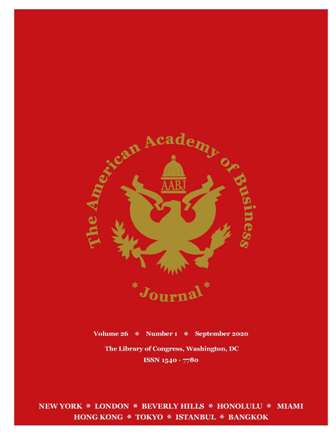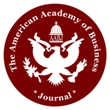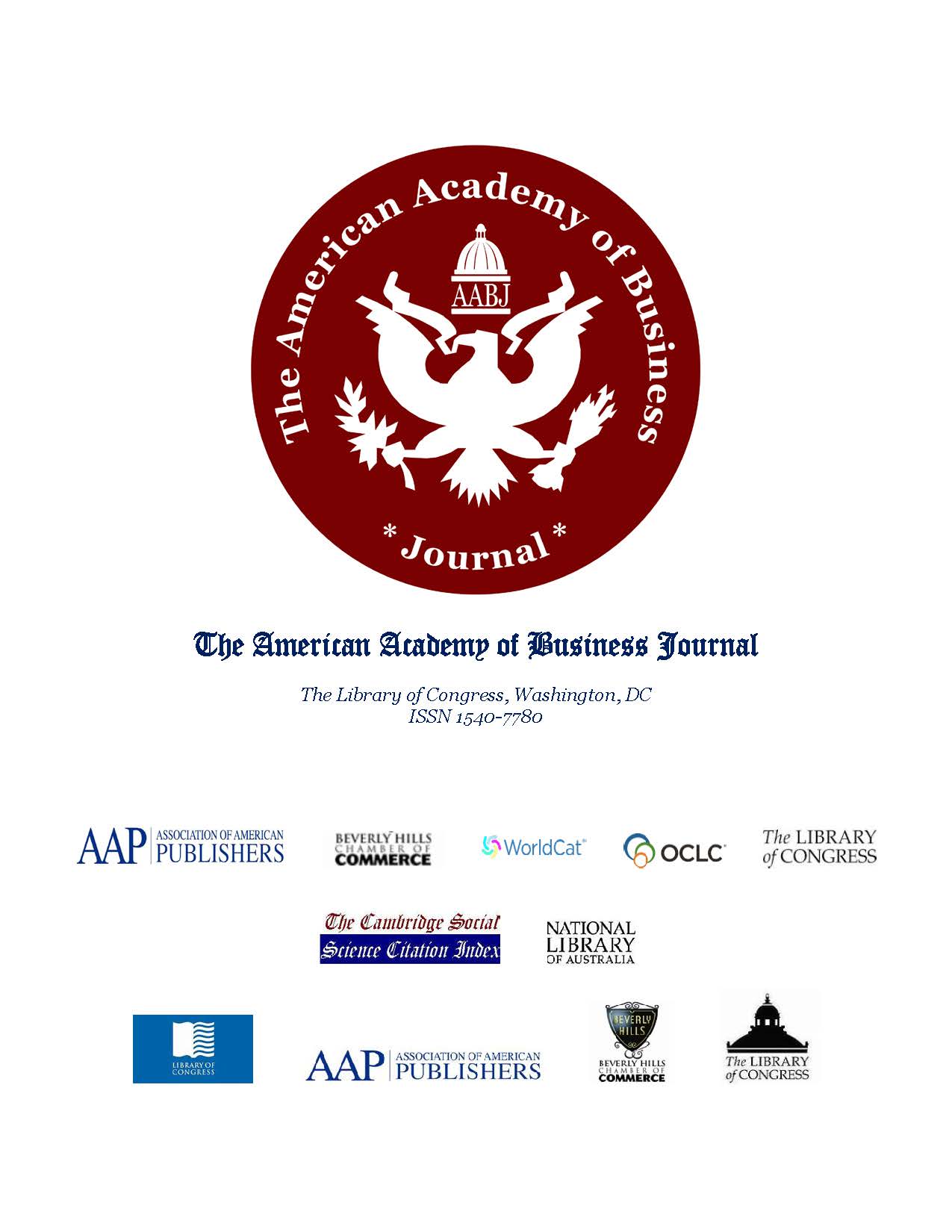|
Classification of Stock
Market Price Change by Data Mining
Dr. Nursel Selver Ruzgar,
Ryerson University, Toronto, Canada
ABSTRACT
In this paper, eight
Canadian banks’ daily stock market price changes are examined by three data
mining techniques, logistic regression, fuzzy-roughNN and genetic algorithms.
Thirty-seven years of data from 1980 to 2017 obtained from NASDAQ for eight
Canadian banks with 21 independent variables and one dependent variable, price,
were used to classify the daily stock price changes. Daily price changes are
divided into three classes, “up”, “down” and “same” according to the previous
stock market daily close price. To determine which method makes the better
classification, three methods run separately for each bank. Then predicted
values for 2018 with each method for each bank, were compared the original 2018
data to see how the predicted values were compatible with the real values. It
was seen that, among the three methods, the genetic programming algorithms
classified the stock price changes well. This paper demonstrates that the
genetic programming method is applicable to a wide range of practical problems
pertaining to price changes. Moreover, the results show that the genetic
programming is a promising alternative to the conventional methods for financial
prediction. Data
mining (DM) and knowledge discovery is a family of computational methods that
aim at collecting and analyzing data related to the function of a system of
interest to gain a better understanding of the system (Triantaphyllou, 2010).
DM attempts to
formulate, analyze and implement basic induction processes that help extract
meaningful information and knowledge from unstructured data. DM that aims to
reveal valuable information from the overwhelming volume of data and achieve
better strategic management and customer satisfaction is the process of using
statistical, mathematical, artificial intelligence, and machine learning
techniques to extract and identify useful information and knowledge assembled
from large databases (Kusrini, 2009). DM can be used in different disciplines,
such as engineering (Carrizosa and Morales, 2013), finance (Cheng, 2010),
business, banking (Ferreira, 2018, Manurung, 2015), medicine (Ramamurthy
and Chandran, 2011) and science (Singh, 2015). There
are many DM methods to perform the analysis, such as clustering, classification,
and association. Classification, which is a work of assessing a data object to
include it in a certain class of available classes, is of the widely used DM
method to extract information from various high-dimensional data sets.
Full Text
Learning from
WhatsApp’s Business Model: The World of Messaging Apps
Dr. Nadeem M. Firoz, Baruch
College, CUNY, New York, NY
Atif Noor, Founder & CEO,
Adaptly-AI.com, Baruch College, CUNY, New York, NY
ABSTRACT
The objective of this
proposal is to determine WhatsApp’s positioning within the social media
marketplace, analyze its strengths and weaknesses, and propose actionable
strategic marketing models which will allow the service to further increase its
user base by curtailing weaknesses and exponentiating strengths. This proposal
will follow the service from its inception as a startup in Mountain View
California to becoming the most popular messaging app in the world after being
acquired by Facebook. Its features will be dissected and its value to the
marketplace will be closely analyzed. The demographics, geodemographics and user
segmentation of the service will be ascertained; along with its business models,
marketing positioning, and SWOT analysis. Through diligent and thoughtful
analysis of WhatsApp’s SWOT, viable options for growth and further market
capitalization will become evident, and recommendations for implementation will
be established. WhatsApp is a cross-platform messaging and Voice over IP (VOIP)
service that allows users to send text messages and video calls, along with
other rich media such as audio, images, documents, and even video calls. (whatsapp.com)
The service was created by WhatsApp Inc. in Mountain View, California by
founders Brian Acton and Jan Koum, who previously worked for Yahoo! (Forbes.com)
After leaving Yahoo! in 2007, they applied to jobs at Facebook, but failed to
get hired. Ironically, after the they were rejected jobs at Facebook, their
company was acquired by Facebook in February 2014 for close to $19.3 billion
dollars (techcrunch.com). By early 2018, the product had accumulated over 1.5
billion users, making it the most popular messaging app in the market. (Forbes.com)
According to the company, “More than 1 billion people in over 180 countries use
WhatsApp to stay in touch with friends and family, anytime and anywhere.
WhatsApp is free and offers simple, secure, reliable messaging and calling,
available on phones all over the world.” (Whatsapp.com) The app was named
WhatsApp because it sounded like “What’s up?” and had a viral component to it.
It was officially incorporated on February 24, 2009 (forbes.com) and the
founders visited RentACoder.com (now known as freelancer.com) to find a Russian
iPhone developer named Igor Solomennikov. In October 2009, Brian Acton was able
to secure $250,000 in seed funding from past colleagues at Yahoo!
Full Text
Collaborative
Strategies in the Context of the Tourism Cluster in the Azores: A Qualitative
Analysis
Antonia Canto, University of
the Azores, Portugal
Anhelina Bykova, University
of the Azores, Portugal
Dr. Joao Couto, University
of the Azores, Portugal
Abstract
The main objective of this study
is to discuss the collaborative strategies within the tourism cluster on the
Azores. A qualitative research framework was developed and responses obtained
through interviews with 30 regional stakeholders were analyzed using the MaxQDA
and NVivo programs. The results highlighted the existence of dynamics and
collaboration between the regional tourism partners. The study reveals that the
most dynamic partners are car rental companies, restaurants, tours companies,
and hotels. Promoting collaboration is crucial for developing a tourist
destination. For collaboration to be successful, it is important to establish
collaborative strategies. There are several definitions of the concept,
according to Child, Faulkner, Tallman, and Tallman (2005); collaborative
strategies are an attempt by organizations to achieve their goals through
cooperation with other organizations rather than competing with them. This work
attempts to delineate a framework of collaborative strategies among several
tourism cluster actors in the Azores region. A thorough analysis of the
interviews collected from the various actors in this sector is undertaken.
Particular attention is paid to the type of activity and to the location of such
activity, so as to reasonably cover the tourism cluster in the Azores. First,
we present the concepts of collaborative strategies and the tourism cluster,
observing their evolution and complexity, and highlight the various
contributions of several researchers in this field of study. Second, the method
and instruments for gathering information are presented, together with the
procedures undertaken in the elaboration of this study. The final section
includes the results and discussion, which evaluates the existence and
importance of collaborative strategies in the region. We first analyze the
definition of the central concepts; this study follows Canto and Couto (2018),
who define the concept of a tourism cluster and collaborative strategies, and
observe the importance, dynamics, efficiency, and sustainability of the tourism
cluster in the Azores. According to Beni (2012), a tourism cluster means a
group of similar products or activities that developed together to “highlight
that this concept” has a strong and significant connotation of junction, union,
aggregation, and interaction. However, according to the same author, it is
possible to deepen the concept by considering that the tourism cluster
constitutes a permanent set of dynamic actions and reiterates community effort,
social mobilization, entrepreneurship in economic investments, efficient
inter-organizational communication, engagement of social actors and
institutional agents, and interaction of all segments of the supply for the
necessary and indispensable synergy in the productive arrangement for the
consolidation of its sustainable development (Beni ,2012), While the definition
of a tourism cluster refers to a group/union of activities and similar products
that evolve together through the efforts and synergies of its collaborators, its
objectives, according to Beni (2012), can be enumerated as follows: reducing
operating costs and transactions between companies (1); harnessing and enhancing
synergies for the production, marketing, and distribution of products and
services (2); sharing technical, productive, and marketing information (3), and
disseminating innovation (4).
Full Text
Efficiency Changes in
the Home and Community-based Services of Long-term Care in Taiwan
Chia-Mei Shih, Department of
Resources Engineering, National Cheng Kung University, Tainan, Taiwan
Yu-Hua Wang, Institute of
Gerontology, National Cheng Kung University, Tainan, Taiwan
Dr. Li-Fan Liu, Professor,
Institute of Gerontology, National Cheng Kung University, Tainan, Taiwan
Jung-Hua Wu, Department of
Resources Engineering, National Cheng Kung University, Tainan, Taiwan
ABSTRACT
Global aging trends have led to dilemmas in resource
allocation. Most developed or OECD countries are struggling to ensure the
sustainability of their long-term care systems, and Taiwan, a developing
country, is not an exception. After years of effort, Taiwan has established home
and community-based services in a formal long-term care infrastructure and has
developed a nationwide database on long term care. However, the
cost-effectiveness of the large amount of resources invested in this system has
not yet been analyzed. This study sought to examine the performance of Taiwan’s
long-term care system from 2011-2016, using the Data Envelopment Analysis (DEA)
based Malmquist Productivity Index (MPI) approach. The results showed a
regression in average total factor productivity over 6 years (-5.5%), mostly
affected by deteriorating technological change (-6.6%). During that same period
of time there was an ascending trend in technical efficiency due to a dramatic
increase in financial investment since 2014, which produced an overall growth of
1.1%. Long-term care is a labor-intensive industry. Our study’s findings show
that, while change factors within long-term care did help to improve the
efficiency of the system to some degree, what really made a difference were
factors that impacted the system from exogenous factors, such as improved
technology. To sustain the productivity of the long-term care system we must
focus on investment in innovations. The sustainability of long-term care
(henceforth LTC) is currently a prominent policy priority in many countries
since the aging trend is causing major fiscal issues (Mosca, van der Wees, Mot,
Wammes, & Jeurissen, 2017). In recent decades, economic growth has been outpaced
by the growth in public funded health expenditures in Organization for Economic
Co‐operation and Development (OECD) countries. This trend is shown in the
increasing proportion of health expenditure accounted for in calculations of
gross domestic product (GDP) (Angelis, Tordrup, & Kanavos, 2017). A new set of
public health and long-term care expenditure projections reaching to 2060
suggest that public spending on health and LTC in OECD countries and in the
BRIICS (Brazil, Russia, India, Indonesia, China and South Africa) will rise
rapidly over the next 50 years despite cost-containment efforts ( through policy
action) or downward cost-pressures (occurring without implicit policy actions).
In the prediction, the total health and LTC expenditure across OECD countries
will increase by 3.3-7.7 percent of GDP on average till 2060. For the BRIICS,
these costs are projected to increase even more steeply by 2.8-7.3 percent of
GDP over the same period overall (Maisonneuve & Martins, 2014).
Full Text
The Impact of the
Tohoku-Oki Earthquake on Tourism Share Prices in Taiwan
Dr. Chun-Huang Liao, Zhao
Qing University, Guangdong Province, China
ABSTRACT
This study uses the event
study method and the recursive Chow test to investigate the impact of the
Tohoku-Oki earthquake on tourism share prices in Taiwan. Cumulative abnormal
returns and structural changes in return relationships were estimated and
tested. The findings show the Tohoku-Oki earthquake had a short-term negative
impact on the stock returns of Taiwan’s tourism companies. Significant negative
abnormal returns lasted for about 19 trading days, and the structure of the
return relationships between the tourism index and market index changed in the
short term after the earthquake occurred. By using hierarchical multiple
regression analysis, this study found the variables of firm size, debt ratio,
ratio of stock market value relative to assets, margin trading of stocks, and
percentage of hotel revenue relative to sales can significantly account for the
cumulative abnormal returns. To
prevent such unexpected event impacts,
suitable strategies
of risk diversification should be undertaken by hoteliers and tourism
operators. International travel between
Taiwan and Japan is very popular, not only because of the close proximity, but
also to some extent because of the history of colonization. However, on March
11, 2011, the Tohoku-Oki earthquake (Tajima et al., 2013; Ito et al., 2012)
suddenly shut down this busy travel line. International tourism markets between
both countries encountered a situation of chaos; many tourists canceled or
changed their original itineraries. This unexpected earthquake influenced
Taiwan’s tourism revenue and share prices slumped suddenly. Large seismic events
are rare in modern history, so they are a natural experiment and a valuable case
study that cannot be reproduced (Kollias et al., 2011b; Shan and Gong, 2012).
However, literature on this kind of case is still rare. The Tohoku-Oki
earthquake occurred at 14:46 on March 11, 2011, in the northeast area of Japan,
just around the Miyagi, Fukushima, and Iwate prefectures. The earthquake of 9.0
Richter on the scale triggered tsunami and nuclear disasters, resulting in
86,000 deaths, more than 13,000 missing persons, and more than 550,000 people to
flee disaster areas. The disasters caused economic losses amounting to USD 235
billion, much higher than other countries’ cases: the economic losses of USD 9.5
billion from the south Asian tsunami in 2004, USD 81.2 billion loss from U.S.
hurricane Katrina in 2005 (Park et al., 2013), USD 1.340 billion losses from the
China Wenchuan earthquake in 2008, and USD 8 billion losses from the Haiti
earthquake in 2010 (Gao et al., 2012).
Full Text
|

 The American Academy of Business
Journal
The American Academy of Business
Journal
.gif)